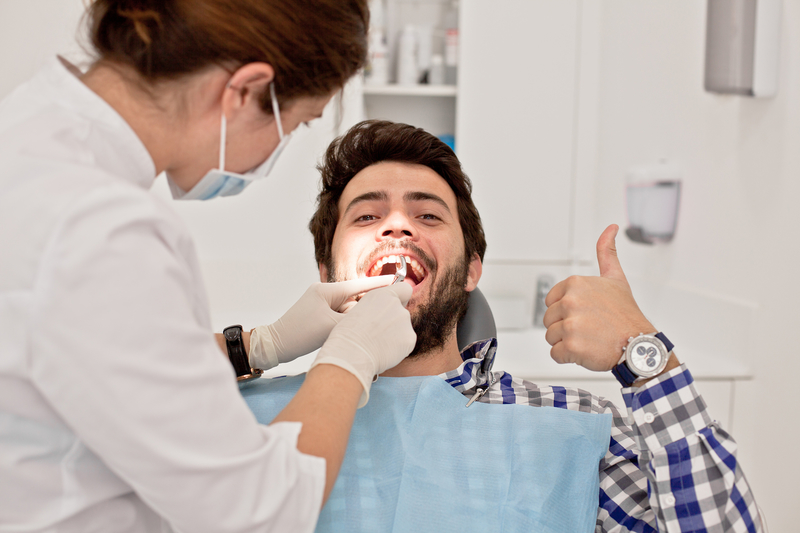Why You Need Both a Dentist and Orthodontist

Dentists and orthodontists are both highly-trained professionals that can transform your smile. However, they provide completely different services to patients and both may be needed to help get your smile as healthy as possible. Orthodontic treatment connects to dentistry in many ways, as do the professionals themselves. If you’re like many others, you may need both professionals to keep your oral health in check.
Your Oral Care
Did you know that your oral health can affect all other aspects of your health? This is especially true if you already have some chronic conditions such as diabetes and heart disease. If your oral health isn’t taken care of, your overall health can worse and you are more susceptible to infection. If you don’t control chronic conditions, your oral health can worsen, as the blood vessels that nourish your teeth and gums can become damaged. Your teeth are more likely to decay and get infections that lead to tooth loss.
That is why taking care of your oral health is so important. It can help determine the state of your overall health and if you keep your teeth for a few years or for many. Many people need both an orthodontist and a dentist to help keep their mouth healthy. Not everyone needs an orthodontist alongside their dental care, but millions do. At least 4 million are getting braces each year in the United States alone to correct bite, alignment and problems with the teeth that lead to oral health diseases. When oral health care is happening at home, yet gum disease tooth decay continue to happen, it’s time to also seek help from an orthodontist.

How Can a Dentist Help You?
A dentist is a professional that every person needs. Dentists are vital to you having good oral health for life. They can detect the presence of tooth decay, gum disease, oral cancer, oral sores and any other oral problem, plus they do the work to help correct those issues. These professionals go to school for 10 years just learning about your mouth and facial structures so they can help you stay healthy. Orthodontists receive all that same training, plus 2-3 extra years learning about straightening teeth, bite and alignment issues and structural problems with the mouth.
Because these professionals do different work, you will probably need both. Dentists have the primary duty to find the presence of tooth decay (cavities) using digital and x-ray technology. Then they have many different procedures to remove decay, fill the cavity, and restore your smile. They can do cosmetic work to make your smile look better and they deal primarily with oral health diseases and helping you avoid them so you don’t have early tooth loss. Orthodontists are trained to see cavities and oral health issues, but they will do structural work to help change your smile instead of dealing with the disease aspect of your oral health. Their work focuses on prevention of those issues in the first place.
How Can an Orthodontist Help You?
Did you know that people have had orthodontic care at least since the time of the Ancient Egyptians? More discoveries are finding orthodontic appliances on teeth thousands of years ago. Why? Because people that long ago also understood the benefits of straighter teeth. It took many centuries for orthodontists and orthodontic work to become established.
Studies found that straighter teeth made dental issues less likely to happen. When patients received orthodontic straightening—even through crude methods—they were less likely to have their teeth decay or break and less likely to have gum issues. The same holds true today. Crooked teeth are teeth that are much harder to clean. In a straight, even bite, the top front teeth rest just slightly in front of the bottom front teeth. From the front to the back, the teeth rest evenly on one another, evening out pressure from biting, chewing, eating, talking and more.
When the teeth are crooked, patients will get areas where they simply can’t get a toothbrush or floss to and those areas decay. The teeth may be at odd angles, and with uneven pressure placed on those teeth all the time, they may simply break. If you have crooked teeth, an orthodontist can easily make a plan to straighten them. Using digital x-rays, an orthodontist can examine your bite, alignment and incoming teeth and can make a plan to ensure all your teeth line up for the best oral health you could have.

Do You Need an Orthodontist?
Not everyone will need an orthodontist, but their care can benefit most people. Even getting slight straightening of the teeth can reduce your dental breaks, emergencies and issues with oral health diseases. Orthodontic care can even help with bad breath if that stems from plaque and bacteria in the mouth that you can’t quite get rid of. To know for sure if you need an orthodontist, make sure to schedule an examination.
For children, the national recommendation by groups such as the American Association of Orthodontics is to visit an orthodontist around age 7 or 8. This is a key time for an orthodontist to be able to tell if the incoming adult teeth are coming in at the correct angle and place in the mouth. Oral health issues that can become severe later on in life can be caught early and childhood and many oral problems can be prevented with some orthodontic care. For all other issues with finding and filling cavities, gum disease, sores and more, make sure to call your dentist. To schedule your consultation with the orthodontist, call Belmar Orthodontics today at (303) 225-9016!

